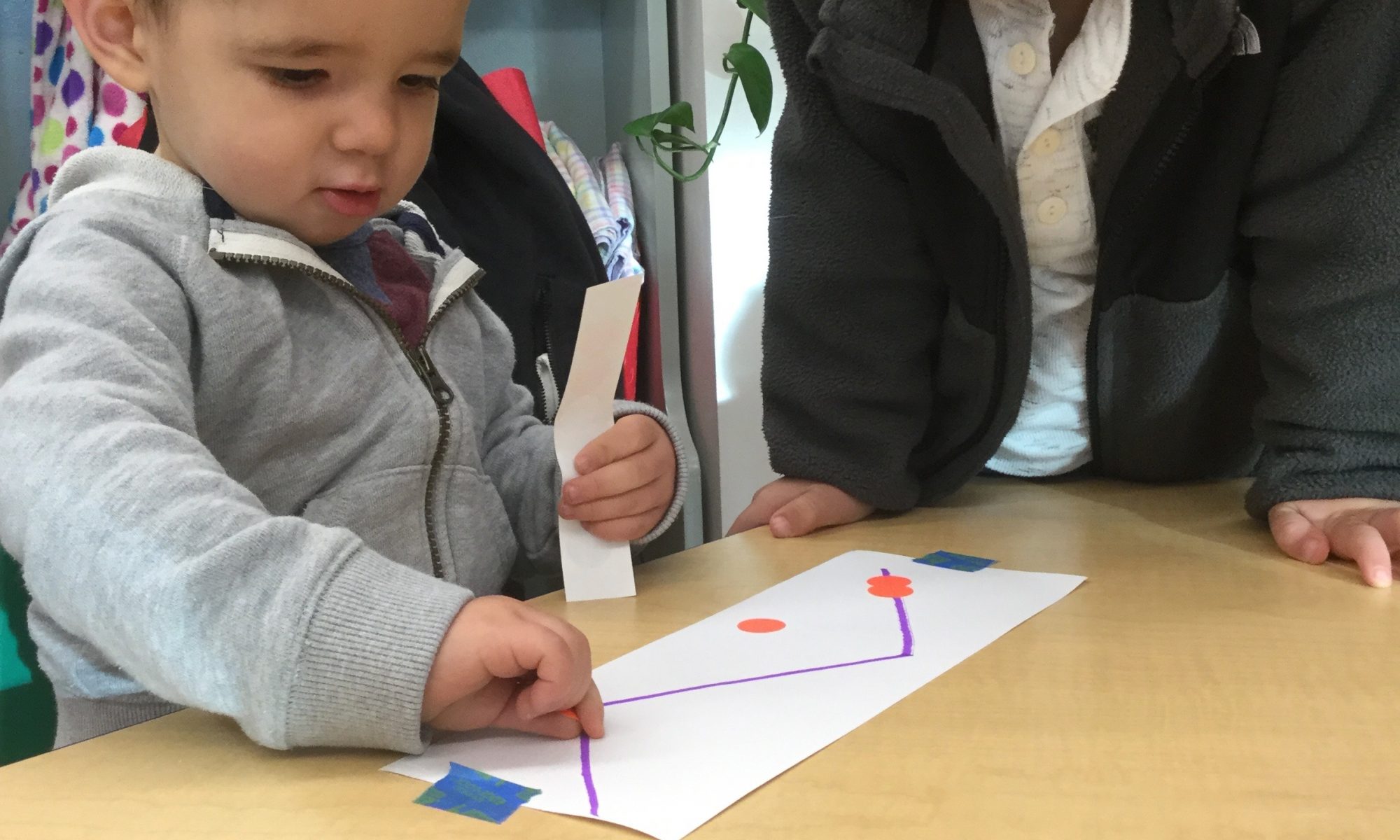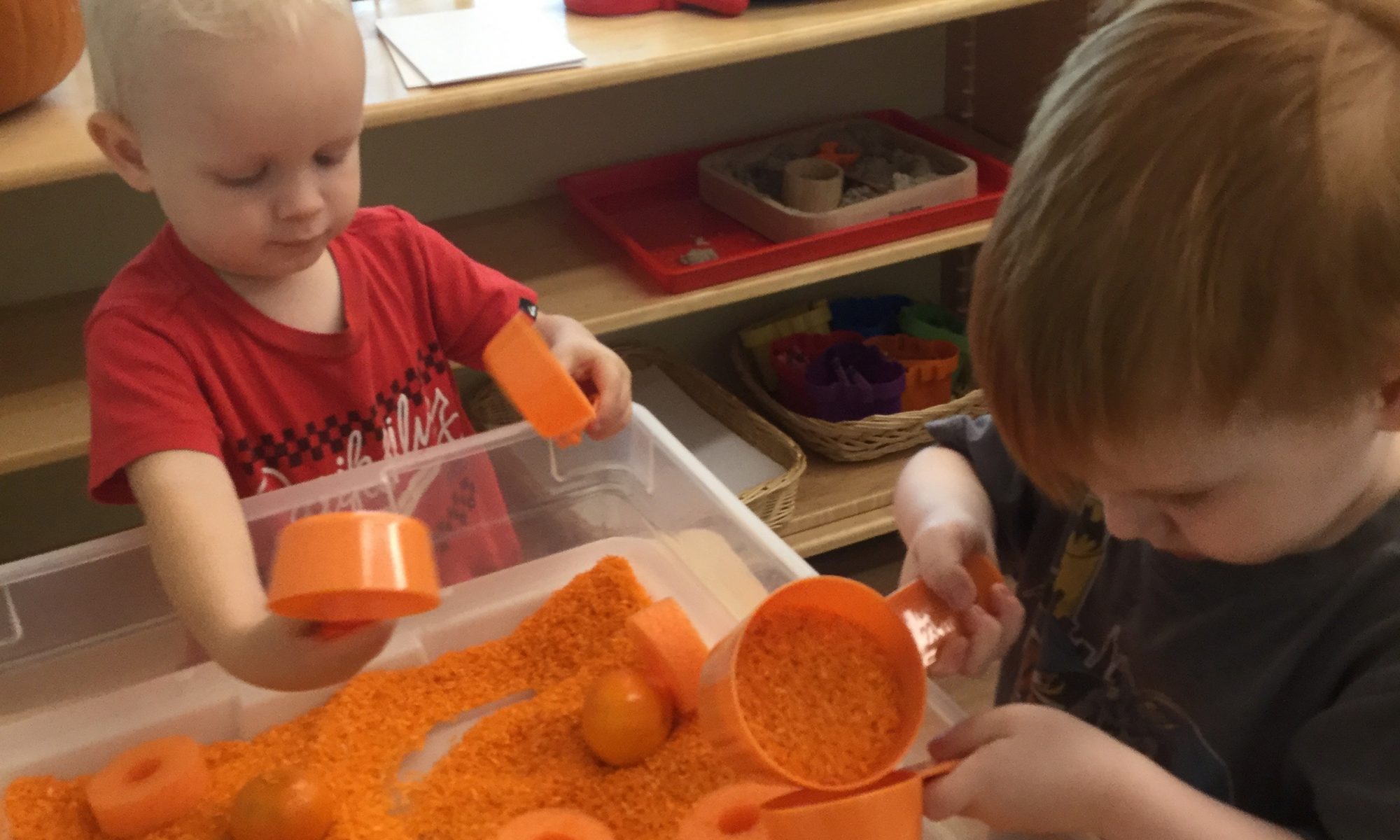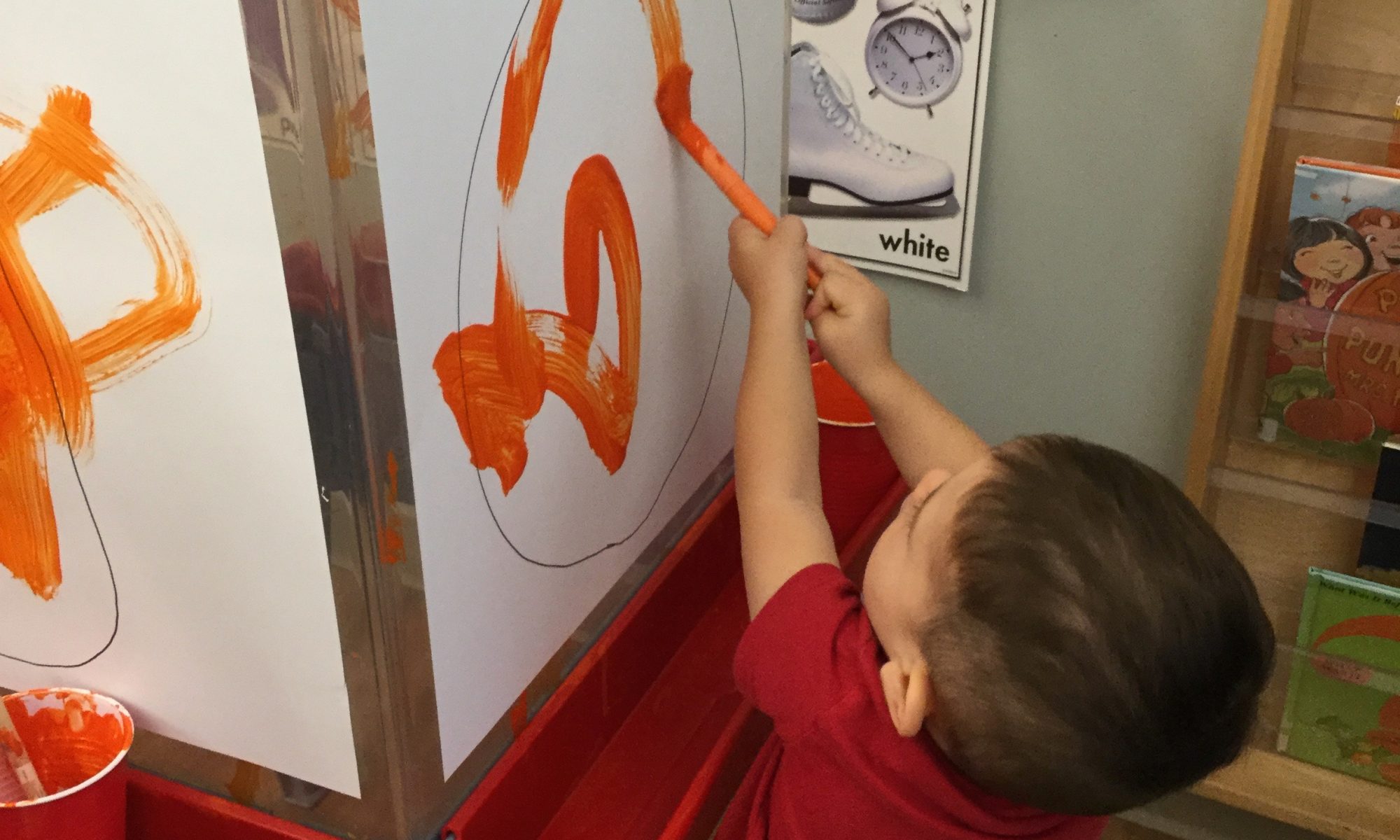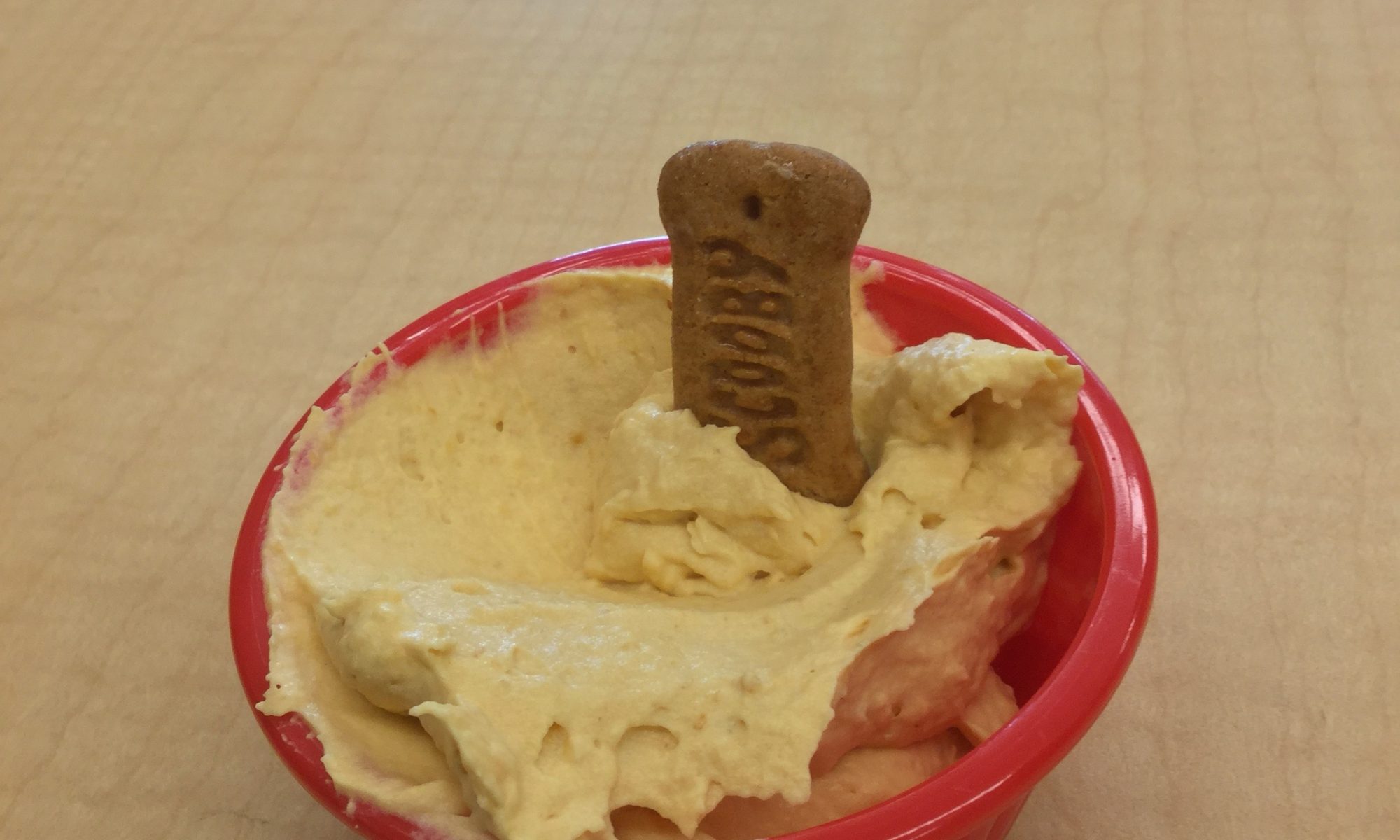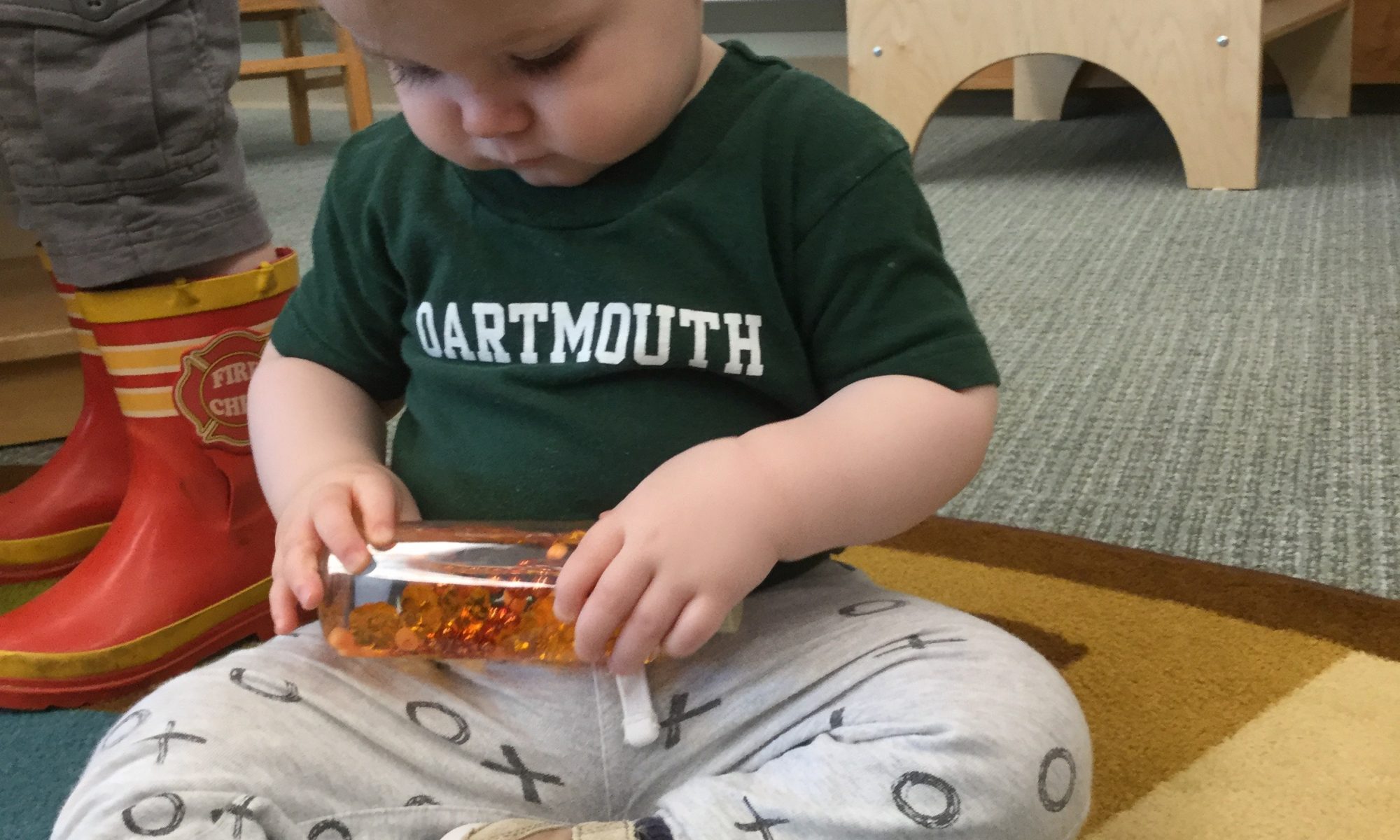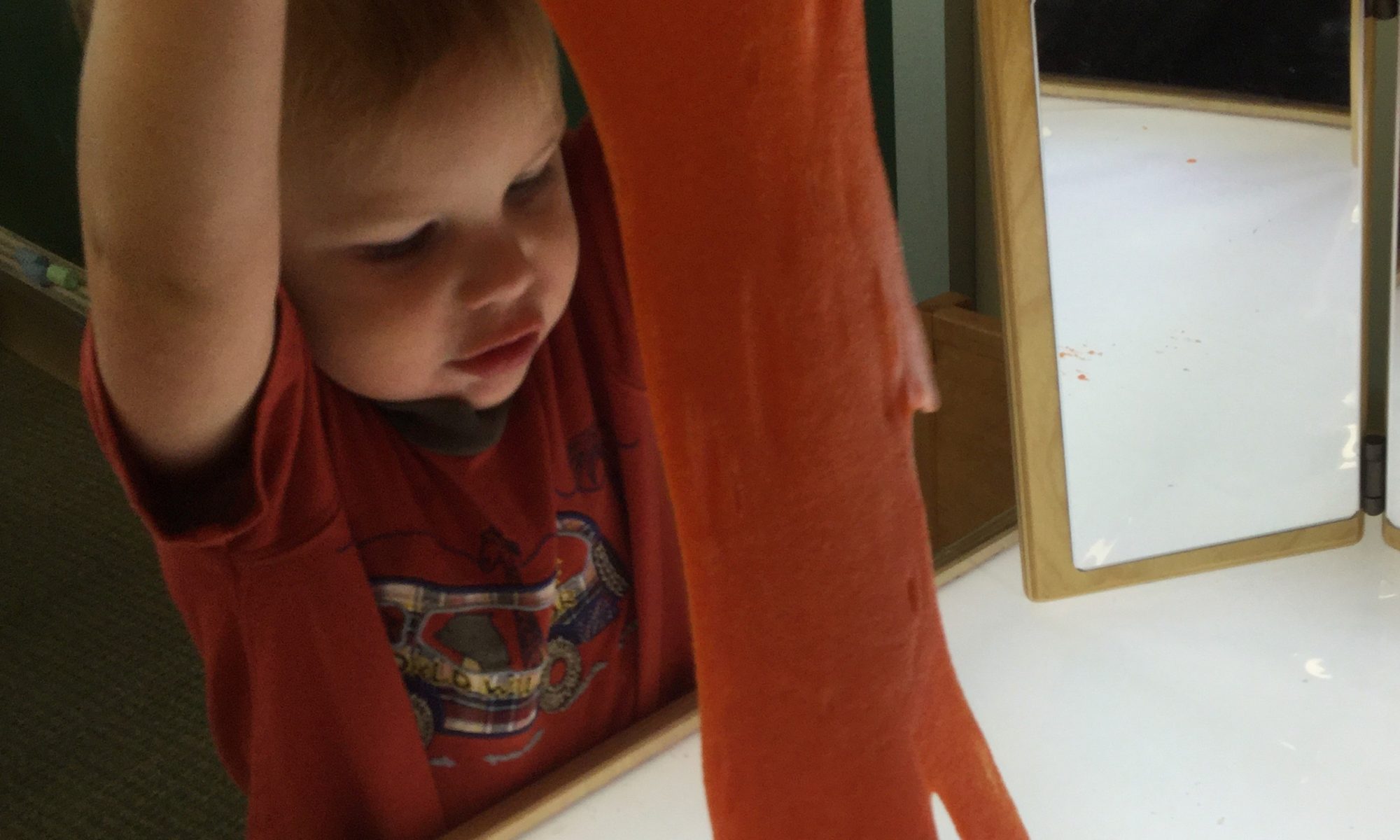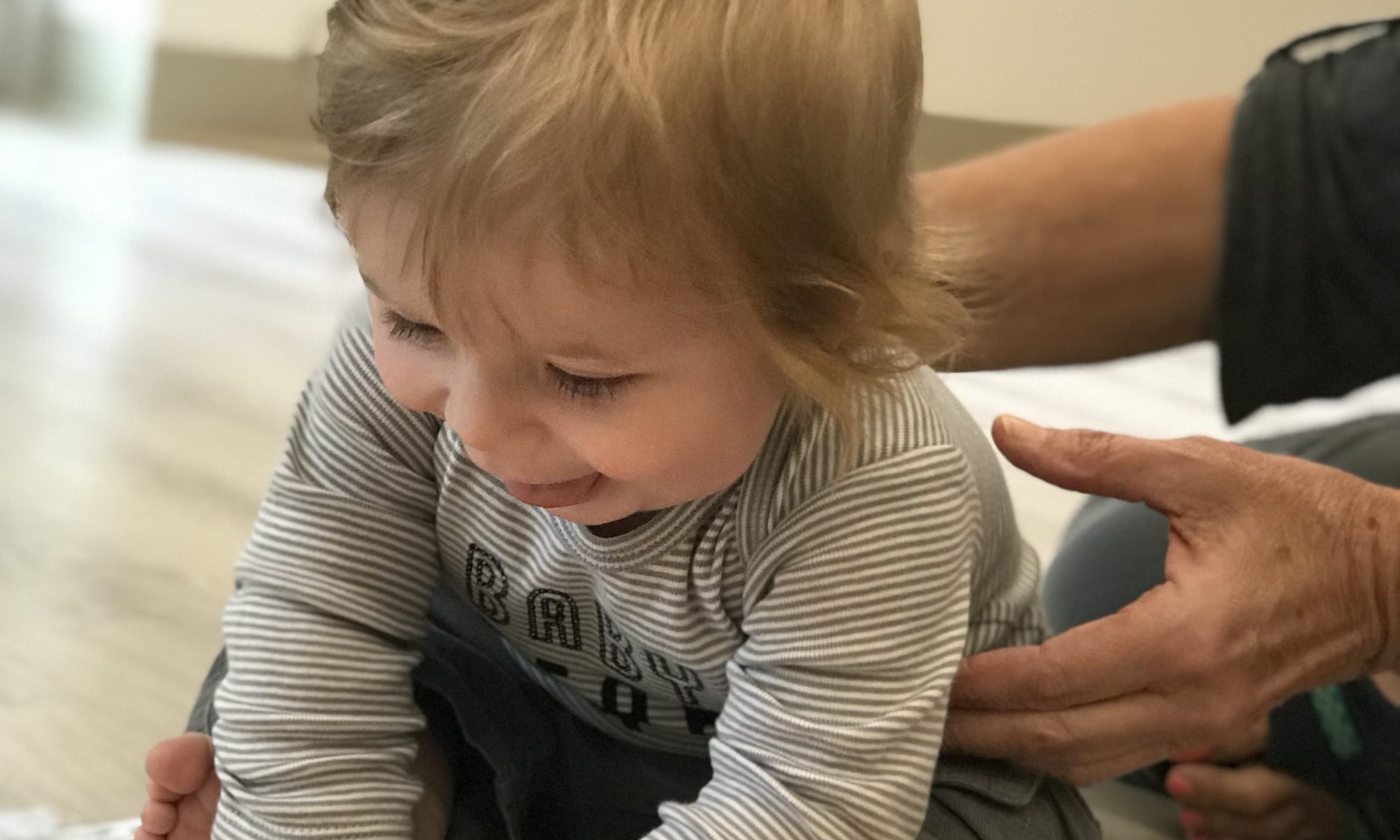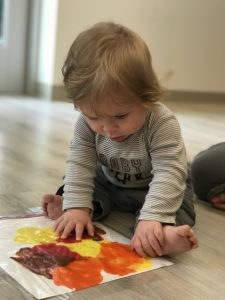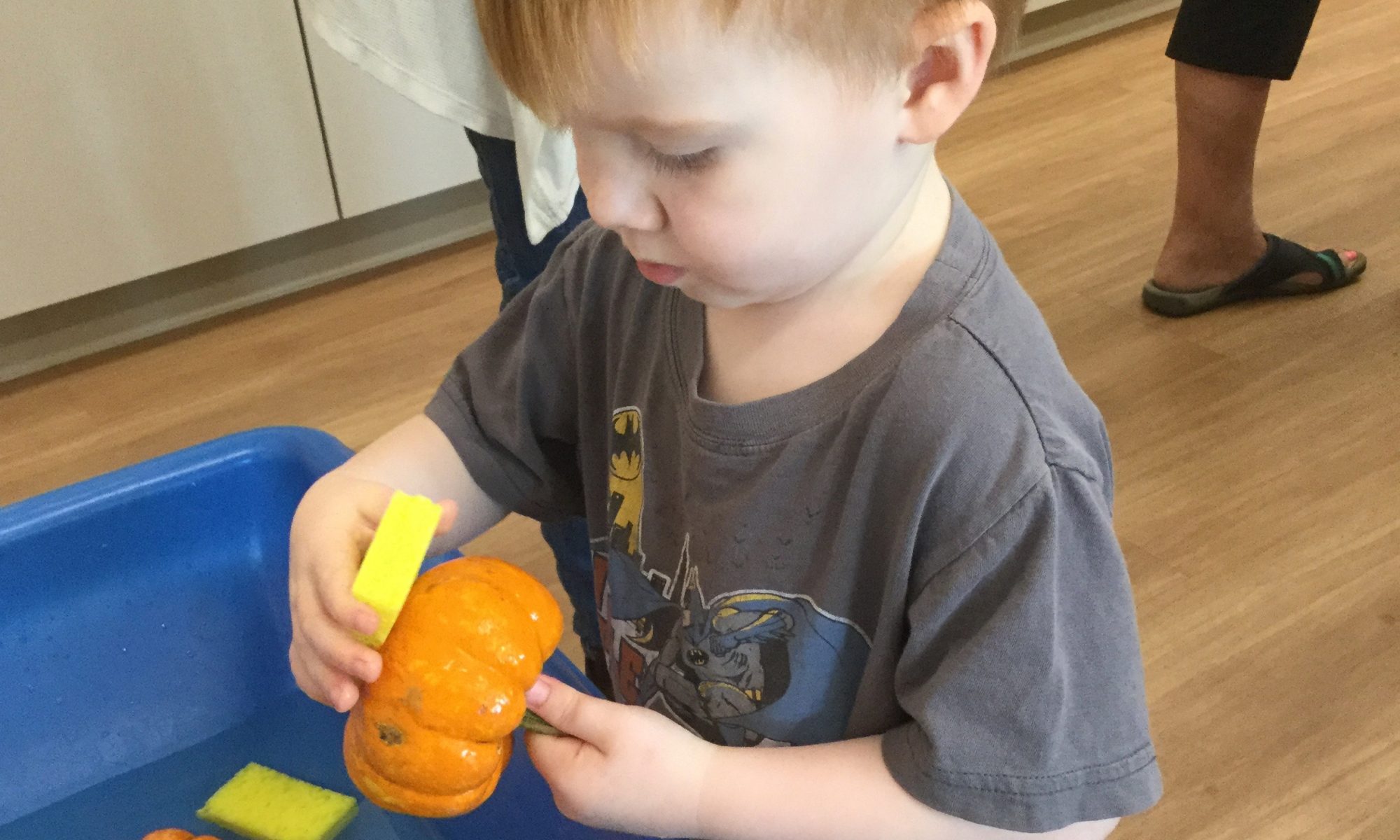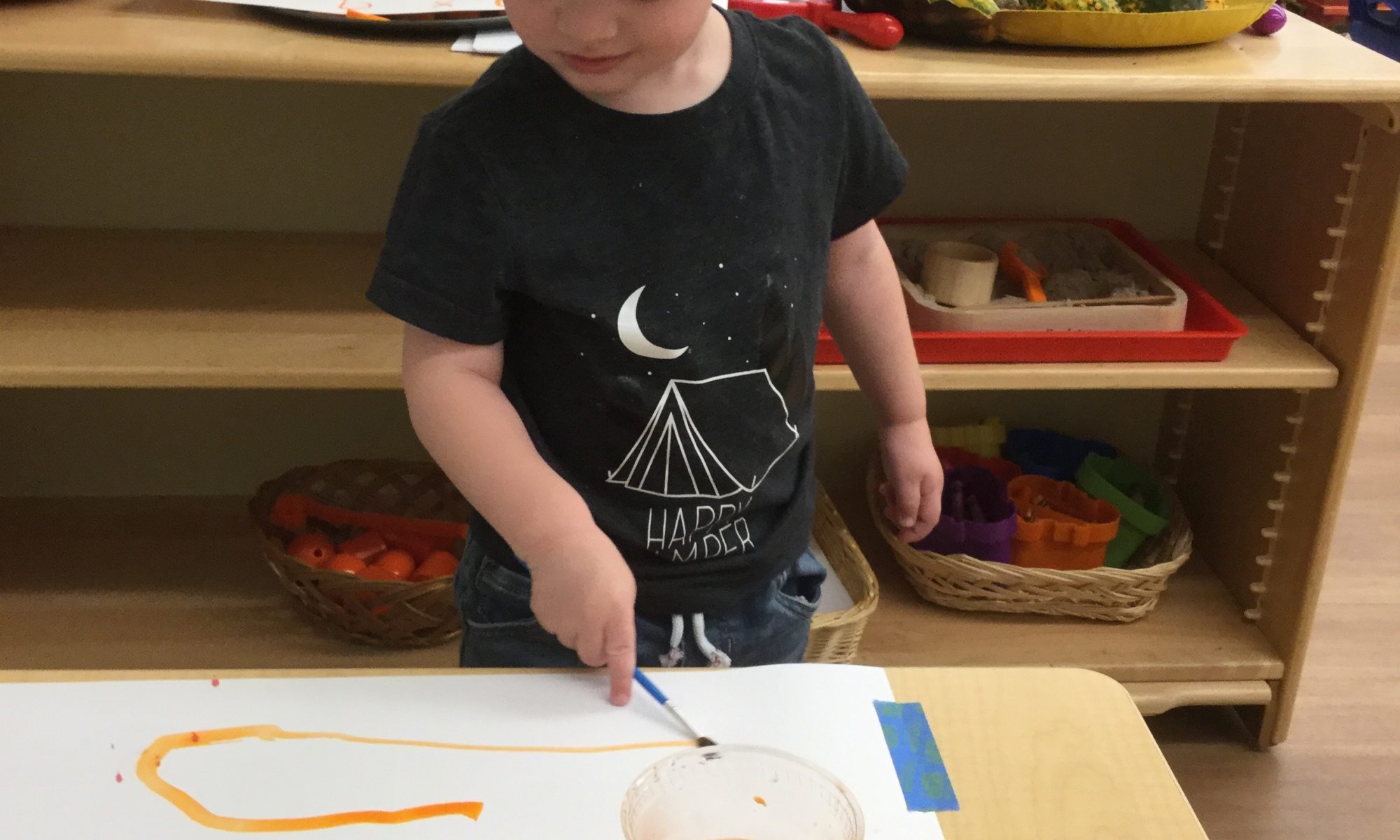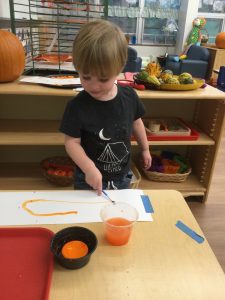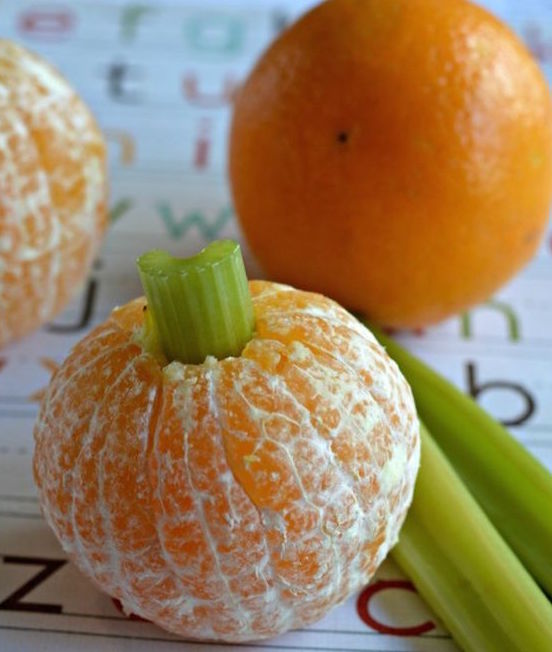Materials
Piece of paper, roughly 3” x 9”
Marker
Orange circle stickers from an office supply store
Directions 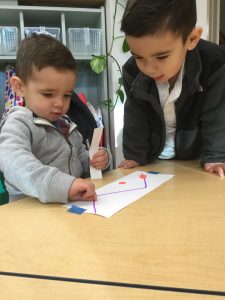
Draw a line across the paper with the marker. It can be a straight line, curvy, zigzag—whatever kind of line you’d like. Give your preschooler a strip of colored stickers. Starting on the left side of the paper, demonstrate how to peel a sticker off the backing and place it directly on the line. Encourage your child to peel the stickers off the strip, one at a time, and place them on the line, working from left to right. The task of peeling the stickers from their backing and placing them on the line is a fun way to practice the fine-motor and focusing skills that are needed for writing, cutting, buttoning, and zipping (among other things) as your child gets a little older!

